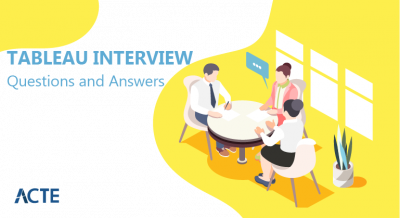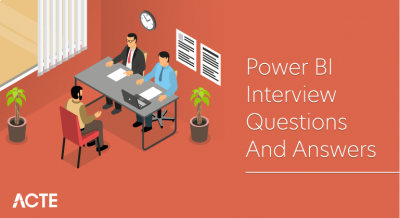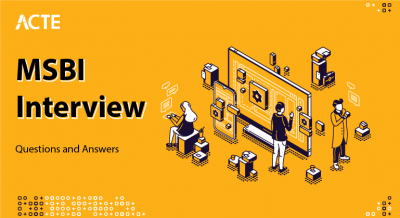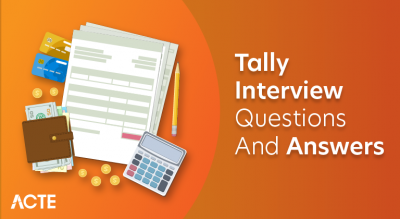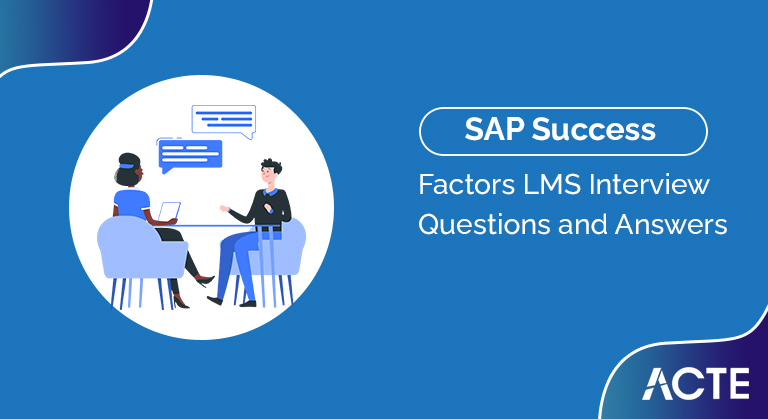
Looking for the top SAP SuccessFactors LMS interview questions to prepare for your interview. Go through some of the best SAP SuccessFactors LMS interview questions with detailed answers before you get ahead. SAP SuccessFactors LMS to become an Expert in SAP SuccessFactors LMS and learn all the instructions required to install and configure the server. Therefore, SAP SuccessFactors LMS professionals need to encounter interview questions on SAP SuccessFactors LMS for different enterprise SAP SuccessFactors LMS job roles. The following discussion offers an overview of different categories of interview questions related to SAP SuccessFactors LMS to help aspiring enterprise SAP SuccessFactors LMS Professionals.
1. What do you mean by the Corporate Data Model?
Ans:
The phrase “corporate data model” refers to firm-wide initiatives to identify data locations, such as servers, departments, divisions, and more. It also refers to the links and ties between things. In corporate data modelling, the basis items and their interactions are described in detail. Foundation Tables, Organization, Job, and Pay are among the objects in this instance.
2. How to Use the Propagation Data Model?
Ans:
In terms of Propagation Data Models, the Foundation Tables from the Corporate Data Model are typically utilized for Auto Population, with the HRIS Propagation Data Model being the most appropriate example
3. How is it possible to connect the levels to the job grades?
Ans:
The response to this specific query. The levels need to be connected to the job grades. A person’s placement in a given job grade does not necessarily exclude them from consideration for other positions. However, one is likely to see more sophisticated behaviours relating to the university level when a position is senior than the existing one.
4. What is DTD?
Ans:
A data model is referred to as a DTD. The acronym for Document Type Definition is the word. An XML document’s legal components, structure, and other characteristics are specified by a DTD. DTD can guarantee the delivery of data in a specific format or the presence of specific data fields. If you have to organize material from multiple writers and sources, you might also wish to invest the time in creating a DTD.
5. What are SAP SuccessFactors advantages, and what is their significance?
Ans:
- In order to make recommendations and analyze the data that HR managers supply, it is crucial to forecast
- the element of success. The following are some advantages of utilizing SAP SuccessFactors:
- Higher output; improved design integrity; improved analytics; improved quality
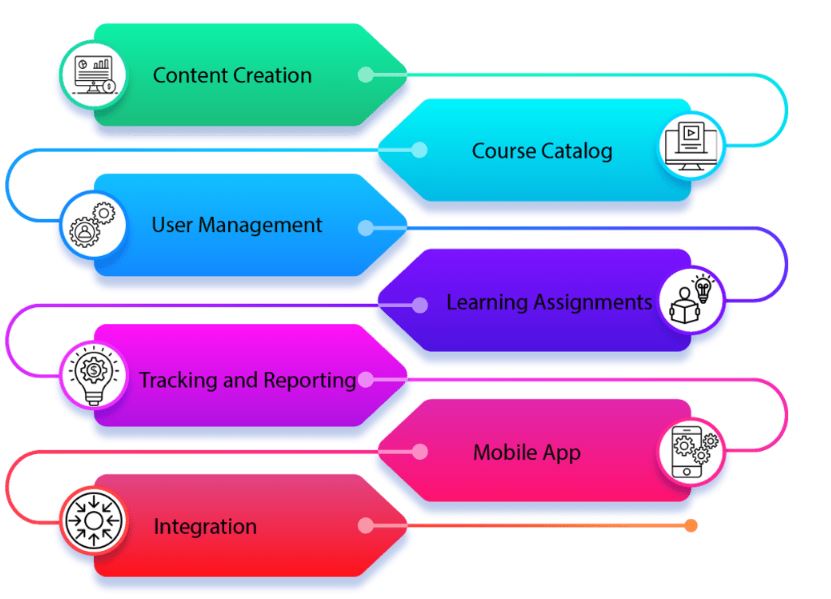
6. What is the significance of Document Type Definition, or DTD?
Ans:
Document Type Definition, or DTD, defines data models. Expert opinions state that DTD aids in building a highly qualified HR team within the specific cloud. A highly unified HR is the most crucial individual to have hired in order to optimize the results of any given business of the corresponding firms
7. What distinguishes Employee Central from SuccessFactors?
Ans:
| Criteria | SuccessFactors | Employee Central | |
| Overall Relationship |
Offers a comprehensive suite of cloud-based HCM solutions |
Serves as a core component within the SuccessFactors suite | |
| Scope | Encompasses talent management, performance, recruiting, learning | Primarily focuses on core HR functionalities | |
| Core HR |
Functions as a key module within the SuccessFactors suite. |
Specializes in essential core HR operations. | |
| Deployment | Completely cloud-based. | Also operates in the cloud environment | |
| Integration |
Designed for seamless integration with various SuccessFactors modules |
Integrates seamlessly within the SuccessFactors ecosystem |
8. What is your definition of success factors?
Ans:
Success criteria are essential in any business to determine a person’s likelihood of pursuing a successful career. Success factors are nothing more than the culmination of the crucial information needed to achieve any targeted company objectives. There are many different success elements, but one is the promotion of animal feeding products.
9. How important are the success variables in IMs?
Ans:
In order to do well in any career, success elements are crucial. There are several instances where success criteria are important. Even though endorsing animal meals may only be done for commercial purposes, the market’s animal enthusiasts find it quite appealing. Every job responsibility is necessary for a successful organization to operate in this way.
10. What advantages does the Corporate Data model offer?
Ans:
- The Corporate Data model caused a major impact. Below is a list of the advantages of the Corporate Data model broken down by points.
- To begin with, the organization’s structure is essentially defined by the Corporate Data Model.
- Secondly, the Corporate Data model configures the foundation objects.
- The corporate data model also incorporates the associations.
- The last (but certainly not least) HRIS components that are compatible with this specific data model are standard ones. There are custom and standard fields with characteristics on each element that control how the simple
11. What elements does the Succession Data Model contain?
Ans:
A succession data model contains all of the employee’s records. Both internally and externally, the fields are constructed using this type of sequence data mode. When I say internally, I mean with regard to the employment-related data. Conversely, externally, it refers to any of the employee’s data.
12. What makes them think that a given framework has three levels?
Ans:
A person with an interest in this particular topic perceives any structure as having three levels. There are multiple reasons for this. One of them is that a framework’s three levels can be used to explain a variety of behavioral categories. That, despite having different ranking systems, are intimately associated with certain work roles.
13. What makes SAP SuccessFactors crucial?
Ans:
SAP SuccessFactors facilitates talent promotion throughout the firm by providing HR and management with centrally maintained performance reviews. It provides employees with CPM tools and metrics so they can track their progress and performance in real-time.
14. In the employee center, how many different types of data models are there?
Ans:
There are three different kinds of data models. that are available in the employee center overall.
- Relational
- Entity Relation
- Dimension
15. Which XML editor is the best?
Ans:
The points that follow provide a detailed explanation of it. The following are the points:
- There are numerous options available when selecting the top XML editor.
- In comparison to XMLSpy, Oxygen is superior in a number of areas. It is ideal for all users, but MAC users in particular.
- Oxygen’s XML parser is far more powerful and sophisticated than you could have imagined. It’s okay to wait until you see any errors while submitting the data model to Provisioning. While verifying XML, it offers a simpler way to troubleshoot.
16. Is it possible to modify a Success Factor after selecting it for a specific role?
Ans:
Once a success factor is selected for a role, it cannot be modified. However, it is contingent upon the demands or specifications of the specific function. Since success is a variable, it can vary from one year to the next.
17. Define success factors for academic staff members.
Ans:
There is a researcher-specific framework in addition to the Strategic Leaders Framework. Based on the corresponding success variables, this is done. The plan is to proceed with all university staff groups using a similar strategy.
18. What does the “360 Feedback” feature in SAP SuccessFactors entail?
Ans:
The “360 Feedback” feature in SAP SuccessFactors allows employees to receive feedback from multiple sources, including managers, peers, and external stakeholders. This comprehensive feedback mechanism provides insights into performance, fosters development, and informs HR strategies.
19. Could you give a summary of the functionality offered by “Goal Management” in SAP SuccessFactors?
Ans:
The “Goal Management” capability within SAP SuccessFactors empowers organizations to establish, monitor, and synchronize individual and team objectives with strategic goals. It facilitates the creation of SMART (Specific, Measurable, Achievable, Relevant, Time-bound) goals, enables progress tracking, and encourages feedback. This functionality fosters transparency, accountability, and organizational alignment, thereby enhancing performance and achieving success.
20. What is the estimated duration for evaluating the success factors?
Ans:
Since the assessment is a novel process, it may take a long time at first. However, while working on the more recent concepts, they can be beneficial and need less time than anticipated for the field’s reasonable data. The procedure is quite easy to follow. All that is required of you is to specify the attribute pii=’true’.
21. What advantages does SAP offer?
Ans:
An organization can benefit from many of SAP’s features, some of which are covered below:
- Efficiency,
- data security,
- improved data management,
- scalability,
- analysis and forecasting,
- cost-effectiveness,
- enhanced flexibility, and
- customizability are the eight benefits.
22. What is included in the Succession Data Model?
Ans:
The Succession Data Model includes the Employee Records. The fields that show up in the Employee’s Personal Information (outside of work) and Employment Information (within work) are configured by the succession data model.
23. How do you combine Employee Central with the product success factors?
Ans:
Employee Central will be able to be integrated internally. It might move forward with other success factor items via the HRIS Sync. To initiate a communication situation that permits the two systems to exchange configuration changes and payroll data.
24. What does the phrase “successor data model” signify?
Ans:
The HR data in this specific data model includes the employee and the individual. The Provisioning refers to this specific model as the “data model.” Furthermore, practically every feature on the One Admin user interface may be customized by customers due to the quick development of the Metadata framework.
25. How much evidence is expected to be produced for the product that accesses success factors?
Ans:
The optimal course of action. One way to approach this is to review the previous year, for example, and then identify two or three instances that can clearly illustrate the elements of success.
26. When you refer to the CSF (country-specific) corporate data model, what do you mean?
Ans:
The point-by-point information provided below provides a quick explanation of the CSF (or country-specific) Corporate Data model. The following are the advantages:
- The Country-Specific or CSF Corporate Data model comes with a few provided standard localization elements. Take the National ID, for instance, and so forth.
- To define the country-specific properties for a given element, the HRIS element must be defined in the CSF (or country-specific) Corporate data model.
27. How will you reset your SuccessFactors password in troubleshooting?
Ans:
SuccessFactors by simply selecting the ‘Forget Password’ option on the login page, provided that the business you work for has allowed the password help section feature. You need to either reset the password or retrieve it. These are your two alternatives. It is dependent upon the company’s password policies.
28. How will the requirements of the consumers be defined in the data model?
Ans:
Uploading the data models for provisioning to the customer’s instance is the first and most important step. The mistakes that aren’t corrected here will be detected by the XML parser. People must, therefore, upload nearly relevant facts. People make mistakes all the time and fail to see mistakes, yet the processing never stops.
29. What is the Success Factors value proposition?
Ans:
The success factor might have several values. The way they are written is as follows:
- Capable of gradually advancing the product characteristics.
- Align the current features while adding new ones upon client desire.
- A platform that allows for quick alterations is appropriate for organic designs. Only minor compatibility and retrospective challenges are required.
- Model Workflow Rules for ata Rules for the Data Model, Events, and Event Derivation Information Model
30. What are the components of success, and why is it named that way?
Ans:
A management word for a component required for an organization or project to fulfil its objective is a success factor because it clarifies the actions that lead to productive work performance.
31. Define a picklist.
Ans:
Another word for a picking list is a picklist. It is a document that has a list of selected things that have been put together to fulfil orders from customers. The picklist displays the products’ quantity, storage location, and customer-specific notes. Picking is typically done.
32. What is defined by the Corporate Data Model?
Ans:
The corporate data model defines the Foundation Objects and their relationships. Foundation Tables are another name for Foundation Objects. Organization, Job, and Pay are a few of them—the two or three that best exemplify the Success Factors.
33. How are SAP SuccessFactors implemented?
Ans:
SAP SuccessFactors’ basic HR lifecycle facilitates the administration of employee data, self-services, payroll, time, benefits, tickets and problems, health and well-being, diversity and inclusion, and global data protection and privacy. It is made up of several services and apps.
34. What terms are defined in the corporate data model specific to a country?
Ans:
The Foundation Objects, or organization-related data, are defined in XML by the Corporate Data Model. It is also possible to declare some of these Foundation Objects as MDF Objects. This document does not cover MDF Objects. Relationships between the foundation objects configured in this data model are also present.
35. What is included in the Succession Data Model?
Ans:
The Records of Employees are included in the model of succession data. The fields that show up in the Employee’s Personal Information (outside of work) and Employment Information (within work) are configured by the succession data model.
36. What is the purpose of the propagation data model?
Ans:
The Auto Population from Foundation Tables is derived using the HRIS Propagation Data Model. The process of spreading modifications to a descendant stream is known as propagation. The act of advocating for modifications to one or more downstream models—such as the enterprise, project, or practitioner models—is known as propagating.
37. Why is DTD employed?
Ans:
A DTD is used to specify the legal components that make up an XML document. It includes a list of legal elements that define the structure of the document. You can declare a DTD as an external reference or inline in your XML document.
38. what do you mean By CSF (or country-specific) Corporate Data model?
Ans:
The point-by-point information provided below provides a quick explanation of the CSF (or country-specific) Corporate Data model. The following are the advantages:
- CSF, or country-specific The Corporate Data model comes with a few provided standard localization pieces. Take the National ID, for instance, and so forth.
- To define the country-specific properties for a given element, the HRIS element must be defined in the CSF (or country-specific) Corporate data model.
39. How can you troubleshoot and forget your password in SuccessFactors?
Ans:
SuccessFactors by simply clicking on the “Forget Password” link if your business has enabled the password help section functionality.option labeled “Password” directly on the login screen. You will either need to reset the password or retrieve it. These are your two alternatives. It is dependent upon the company’s password policies. If the previously mentioned feature isn’t working or you need to learn how to log in, get in touch with the relevant company’s representatives.
40. How will the requirements of the consumers be defined in the data model?
Ans:
Uploading the data models for provisioning to the customer’s instance is the first and most important step. This is where the mistakes that remain unfixed in the XML parser will be detected. People must, therefore, upload nearly relevant facts. People make mistakes all the time and fail to see mistakes, yet the processing never stops.
41. What is the Success Factors value proposition?
Ans:
- The success factor might have several values. The way they are written is as follows:
- Capable of gradually advancing the product characteristics.
- Align the current features while adding new ones upon client desire.
- A platform that allows for quick alterations is appropriate for organic designs. Only minor compatibility and retrospective challenges are required.
- Model Workflow Rules for ata Rules for the Data Model, Events, and Event Derivation Information Model
42. What are the components of success, and why is it named that way?
Ans:
A management word for a component required for an organization or project to fulfill its objective is a success factor since it provides an explanation for actions which lead to effective work performance.
43. How are Employee Central and other goods externally integrated?
Ans:
For external integration, a cloud-based integration platform is available. Basics of Employee Central Easy-to-configure Organization, Job, and Pay structures, customizable Employee Data elements, and Event and Event Reasons to monitor events throughout the employee lifecycle are all made possible by SAP SuccessFactors Employee Central Core features.
44. What is defined by the Corporate Data Model?
Ans:
The corporate data model defines the Foundation Objects and their relationships. Foundation Tables are another name for Foundation Objects. Organization, Job, and Pay are a few of them.
45. How much proof will we be expected to provide in order to evaluate Success Factors?
Ans:
- Look over the examples from the select two or three that best exemplify theSuccess Factors.
- The strategic focus, people, operations, marketing, and finances are the five essential success aspects.
46. How will I be assisted in applying the Success Factors?
Ans:
Training will be provided to managers:
- Success Factor material
- usage instructions will be accessible on the HR website
- counsel can be obtained from HR team members.
47. What terms are defined in the corporate data model specific to a country?
Ans:
The fields for foundation objects for a distinct nation are defined.
Corporate Data Model for a Particular Nation or Area. This data model contains the configurations for the foundation objects from the Corporate Data Model that require localization according to the nation or region. The definition included in the Corporate Data Model is utilized if the configuration for a specific nation or region is absent.
48. What is the purpose of the propagation data model?
Ans:
The Auto Population from Foundation Tables is derived using the HRIS Propagation Data Model. All the mechanisms encountered in macrocell prediction are included in the two fundamental propagation models, namely Plane Earth Loss and Space. Academics often use these models to forecast the overall signal loss.
49. How do you assist in applying the Success Factors?
Ans:
- Managers will be trained;
- HR team members will be able to offer support
- Success Factor paperwork and instructions on its use will be published on the HR website.
50. Explain DTD By the document model.
Ans:
A DTD specifies both the document’s structure and its XML parts or Document Type Definition. For instance, in cases where the Document Type Definition (DTD) does not include a new HRIS element with any associated qualities, one will encounter difficulties that they are unable to overcome.
51. Describe A DTD.
Ans:
A specification file containing a set of markup declarations defining a document type for a markup language belonging to the SGML family (such as GML, SGML, XML, and HTML) is called a document type definition (DTD).
52. How does Employee Central work with the other SuccessFactors products?
Ans:
Employee Central uses HRIS Sync to integrate internally with other SuccessFactors solutions. If available, the employee master data is obtained from SuccessFactors Employee Central by a scheduled SAP Identity Management initial load process. Furthermore, in order to load records that are not employees, the initial load job loads data from the user data in SuccessFactors.
53. What is included in a succession data model?
Ans:
Employee records make up the Succession Data Model. The fields that show up in job and employee data are configured using this paradigm. The Employee Records are located in the Succession Data Model. Which fields appear in the Employee’s Personal Information (outside of work), or does the succession data model determine Employment Information (within work)
54. What is defined by the Corporate Data Model?
Ans:
The definition of foundation items (foundation tables) and their linkages, such as those involving job, organization, and pay, is provided by corporate data models.
The Foundation Objects, or organization-related data, are defined in XML by the Corporate Data Model. It is also possible to declare some of these Foundation Objects as MDF Objects. This document does not cover MDF Objects. Relationships between the foundation objects configured in this data model are also present.
55. Bring up the propagation data model’s application.
Ans:
The auto-population of found objects is its intended purpose. The propagation rules-based dissemination of data to one or more local access databases from one or more source data warehouses.
56. Define the Sap Modules list.
Ans:
SAP Functional Modules List Customer relationship management (SAP CRM), human resources management (SAP HR), SAP Fieldglass, SAP Financial Accounting, SAP Controlling (SAP CO), Finance and Controlling (FICO), Sales and Distribution (SAP SD), and SAP Fieldglass.
57. Define payroll?
Ans:
A sub-module of SAP Human Capital Management, SAP HCM Payroll (also known as SAP Payroll) assists an organization’s HR department in managing its payroll procedures. The process of determining an organization’s permanent and temporary employees’ salaries and wages is known as payroll.
58. What does a succession data model contain?
Ans:
The Employee Records are located in the Succession Data Model. Which fields show up in the employee’s employment information (inside the workplace) or personal information (outside the workplace) is determined by the succession data model.
59. What settings in the succession data model are unique to each country?
Ans:
GlobalInfo and homeAddress are fields for person objects that are defined in the Country/Region-Specific Succession Data Model. See the Related Information section for further details. For this HRIS element, the Country/Region-Specific Succession Data Model defines all of the fields.
60. What is the data modeling process’s initial step?
Ans:
- The first step is to collect data and analyze the problem.
- Gathering requirements is the first step in the data modeling process.
- It’s critical to discuss the requirements with the stakeholders when creating the appropriate data model.
61. What settings in the succession data model are unique to each country?
Ans:
GlobalInfo and homeAddress are fields for person objects that are defined in the Country/Region-Specific Succession Data Model. See the Related Information section for further details. For this HRIS element, the Country/Region-Specific Succession Data Model defines all of the fields.
62. What is the data modeling process’s initial step?
Ans:
The first step is to collect data and analyze the problem. Gathering requirements is the first step in the data modeling process. It’s critical to discuss the requirements with the stakeholders when creating the appropriate data model.
63. In PDF, what is a framework?
Ans:
Generally speaking, a framework can be thought of as an application generator for a given domain, or more precisely, it can be thought of as the complete code for the fundamental operations of a system, which can be tailored to meet the requirements of a single application.
64. How many different options are there in SAP SuccessFactors for assigning responsibilities to users?
Ans:
In SAP SuccessFactors, responsibilities can be assigned to users in three different ways:
- Giving users their roles by hand
- Roles that are automatically assigned to users according to their organizational structure
- Roles that are automatically assigned to users according to their job function
65. Define Middleware and Topography in SAP.
Ans:
- As part of an integration scenario, two types of landscapes are possible: (1) SAP HCI is a separate component from the SAP ERP HCM suite, and (2) SAP PI is a part of the SAP ERP HCM On-premise landscape.
- The integration add-on uses middleware to provide the integration scenario.
- As middleware, you can transfer material via SAP Process Integration (PI) or SAP HANA Cloud Integration (HCI).
- The on-premise SAP ERP HCM package includes integration connectivity add-ons and integration add-ons that are embedded when using SAP Process Integration as middleware.
66. Determining the Main Field Mapping for Personnel Information
Ans:
The transfer of Employee Central metadata to the SAP ERP HCM system, and you link appropriate SAP ERP HCM fields to these Employee Central fields. Fields and specify extra transformations as necessary.
67. Define Employee data.
Ans:
The information that a company gathers about its team members while they are employed is known as employee data. This covers everything from the most fundamental information—such as names and dates of hire—to more concrete information—such as performance reviews, engagement metrics, and reasons for leaving the company.
68. What is a check table in SAP?
Ans:
- SAP Blogs: Employee Central Payroll A hosted payroll engine from SAP serves as the foundation for Employee Central Payroll (ECP). Even though ECP’s basic engine is identical to the SAP on-premise payroll engine, it is a different product in terms of development, maintenance, and licensing.
- Check Table: All valid entries for a specific foreign key table field are contained in this simple table. The check table essentially limits the field value and is used for field-level validation. (Alternatively) The table the system uses is called the check table.
69. What is SAP’s ECP system?
Ans:
- As of my last update in January 2022, there’s no extensively honored term” SAP’s ECP system.”
- SAP, a German transnational software pot, is famed for its enterprise resource planning( ERP) software and other enterprise results.
- It’s important to note that developments or new releases may have passed since my last update, and SAP may have introduced new products or systems.
- For the rearmost and most accurate information, I recommend checking SAP’s sanctioned website, attestation, or reaching SAP directly to interrogate about any ECP system introduced after January 2022.
70. What does PDR provide when you observe a success element shifting in a year?
Ans:
There needs to be a lot of communication when someone notices that a certain success component has changed over a year. Reviewing in accordance with the assistance in communication between the employee and the manager. [Note: Both positive and bad effects on the PDR form may result from the adjustment.]
71. What is position management in SAP SuccessFactors?
Ans:
Employee Central Position Management facilitates your ability to execute several tasks: Establish and manage online roles with the proper safeguards in place. Keep Note of the position’s category (regular, part-time, intern, etc.), as well as the people who currently hold it and those who have held it in the past.
72. What distinguishes a position in SuccessFactors from a job?
Ans:
An employee’s container. If more than one person is doing the same task, assign each person to a position and link all of those jobs to a single job. Multiple positions can be attached to a single job, but a job can only have one position linked with it.
73. What does FTE in SuccessFactors stand for in its entirety?
Ans:
The term refers to “full-time equivalent.” For the purpose of allocating resources in projects, the word “FTE” is essential. Learn what FTE is, how to calculate it, and how project management uses it by continuing to read.
74. What permissions and roles are there in SuccessFactors?
Ans:
Putting Role-Based Permissions (RBP) into Practice Using the Role-Based Permissions (RBP) security architecture, you can control who has access to your SAP SuccessFactors HCM Suite and how much access it can grant. RBP manages employee access to view and modify apps. This suite-wide permission scheme covers most SAP SuccessFactors products.
75. Which four user kinds are there?
Ans:
There are four primary categories of users.SAP SuccessFactors typically classifies users into four primary categories:
- Employee: Regular users who access personal information, performance reviews, and other HR-related data.
- Manager: Users in supervisory roles responsible for overseeing employee performance, conducting appraisals, and making team-related decisions.
- HR Administrator: Individuals with administrative duties managing HR processes, employee data, and system configurations.
- Executive: High-level users, often leaders or executives, with access to strategic workforce analytics and summaries for informed decision-making.
76. Define RBP in SuccessFactors.
Ans:
Using the Role-Based Permissions (RBP) security architecture, you can control who has access to your SAP SuccessFactors HCM Suite and how much access it can grant. RBP regulates employee access to the apps that they can view and use.
77. What are SAP SuccessFactors learning Security’s three main components?
Ans:
Three elements make up SuccessFactors Learning’s administrator access security model:
- Domains
- Domain Restrictions
- Roles.
78. Which SAP security component is the following?
Ans:
- Infrastructure security components of SAP security.
- Security of networks.
- Security of the operating system.
- Database safety.
- Server configuration using secure code ABAP/4.
- Turning on security logging on.
- Interaction within the system.
79. What SAP security measures are in place?
Ans:
SAP Compliance, Governance, and Risk Process and access control for authorizations, audit management systems, and business integrity screening to identify fraud and vet possible partners are examples of security components.
80. What is integration between SAP SuccessFactors?
Ans:
SAP SuccessFactors – Integration Add-On Previous. This add-on for SAP ERP HCM and SuccessFactors HCM enables you to combine organizational data, qualification data, and organizational structure between two environments.
81. What is the purpose of SAP SuccessFactors?
Ans:
Cloud-based HCM software programs called SAP SuccessFactors provide workforce planning, talent management, employee experience management, HR analytics, and payroll in addition to conventional HR and payroll functions.
82. What is the integration centre’s purpose?
Ans:
To create, execute, plan, and keep an eye on basic integrations with the Integration Center. The most popular export and import use cases are made simpler, and a guided approach makes it simple and quick to establish integrations.
83. What makes up the integration centre?
Ans:
Incorporation of the CNS (usually the spinal cord), one or more synapses, which combine the incoming data and the outgoing response, make up the centre. An effector cell receives a nerve impulse from a motor, or efferent, neuron that travels down an efferent channel from the integration centre.
84. What purpose does integration serve?
Ans:
One way to solve a function from its differentiation is through integration. You are asked to discover a function’s original function given its derivative rather than differentiating it. This kind of procedure is known as anti-differentiation or integration.
85. What does SuccessFactors’ extension centre mean?
Ans:
SAP SuccessFactors Employee Central’s Extension Center combines all of the transactions required to construct the individual sections of an Extension and publishes your complete add-on for the SAP SuccessFactors platform. Additionally, it provides you with a comprehensive overview of all of your extensibility assets in one easy-to-access location, including the various Extension objects.
86. Define Economical Capital Expenditure.
Ans:
This refers to the costs associated with the IT infrastructure needed for on-premise solutions. IT infrastructure comes at a very high cost. Examples include network devices, servers, and interfaces.
- Operational Expenditure: Purchasing a hardware platform is significantly less expensive when using a cloud solution since there is no need for capital expenditure. In a cloud environment, the hardware is shared and purchased by the cloud service provider; the company’s sole expenses are those related to customers and tenant maintenance.
87. Explain what the types of documents are.
Ans:
- Types of Documents
- The SAP SF HCM suite is compatible with the subsequent document types: You are able to open CSV, DOC, GIF, HTML, JPEG, JPG, PDF, PNG, PPT, RTF, TXT, XLS, and XML among file formats.
- o XLSX and DOCX can also be utilized with a learning management system.
88. What is Adobe Sign integration with Successfactor?
Ans:
Through the SAP BTP Cloud Foundry environment, the Adobe Sign for SuccessFactors integration expands the Adobe Sign features on SuccessFactors. It has a Recruiting Management (RCM) connection that lets customers send Offer Letters to a single recipient directly from within SuccessFactors.
89. Does SAP allow the XLSX file format?
Ans:
The SAP Gateway framework supports Excel, or more specifically, XLSX. SAP Gateway supports an alternative format for OData requests reading an entity set supplied with the $format=xlsx URL option. Or delivered using the accept = application/vnd HTTP header.
90. Which file format is used by SAP?
Ans:
PDF files for documents. Files of one-page documents in TIFF, PNG, and JPEG formats. Scene text images in JPEG, PNG, and TIFF formats
Electronic invoice document files in Factor-X and ZUGFeRD standards (all versions), as well as in PDF and XML hybrid format.


